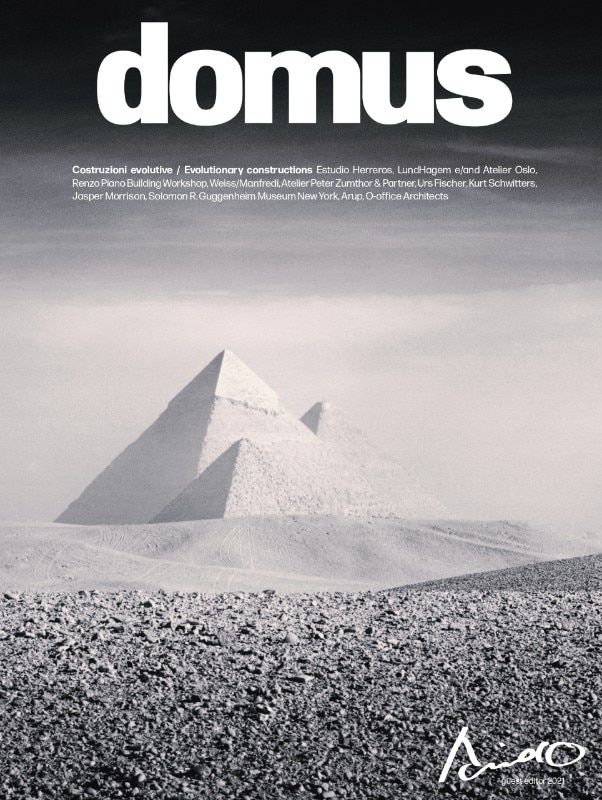This article was originally published on Domus 1060, September 2021.
One of the ideas abandoned in the development of modernism is that architecture is an entity amassed over time. In the old world before modernity, it was commonplace for the construction of monumental edifices such as cathedrals to exceed multiple lifespans. Building on the endeavours inherited from previous generations with conformity and consistency, dedicated artisans continuously worked towards the image of an overall plan to transmit to the future. Within this process exists the relay of creation. The richness of that time allowed for creative leaps in architectural space, as seen by the narrative evolution of the Romanesque to the Gothic in medieval Europe.
And at times, the profound discourse transcending the epochs resulted in the accidental creation of a beautiful world. Katsura Rikyu Palace, for instance, is a traditional Japanese building complex where differing styles from successive eras coexist while marginally overlapping one another. However, in the contemporary age, which began with the Industrial Revolution in Great Britain, the benefits of that time were lost in the pursuit of economic rationality. Modernism delineated “creation” as building on land disconnected from the past. By valuing the moment of completion as the final objective above all else, the everlasting time of architecture disappeared. Opportunities for architectural metamorphosis or maturation were then stripped away, leaving us with a self-contained monument, slowly fading to nothing.
As architects, no matter how idealistic and imaginative we are, our dreams will not come true unless they are accepted by patrons.
The result is glamorous but flimsy – a dead modern landscape within the built environment that is repeatedly demolished and rebuilt. Of course, this is not to say that “evolutionary architecture” has not manifested in the modern era. The Sagrada Familia, Barcelona’s symbol of eternally unfinished architecture, may be one such precedent. Others include the experimental 1970s Arizonan desert city of Arcosanti, the Setouchi Art Islands centred on Naoshima, the Louisiana Museum of Modern Art overlooking the seas of Copenhagen, and more. Like a living creature, some structures breathe life into place, generating and transforming to prove the possibility of long-enduring and organic growth.

In many cases, the driving force behind these miraculous projects is not the creator’s power but rather the client’s passion and concept. As architects, no matter how idealistic and imaginative we are, our dreams will not come true unless they are accepted by patrons. We are powerless. However, even amid the challenge of realising architecture, we must build point by point. Eventually these points might connect to turn into lines, and the lines into surfaces. If you cannot manifest the work you envision, dig out the demand and create the work yourself. If you cannot fulfil your dreams within existing frameworks, start by changing the framework itself. Never give up thinking and creating.
Opening image: Louisiana Museum of Modern Art, Denmark. Photo Maria Eklind su Flickr



